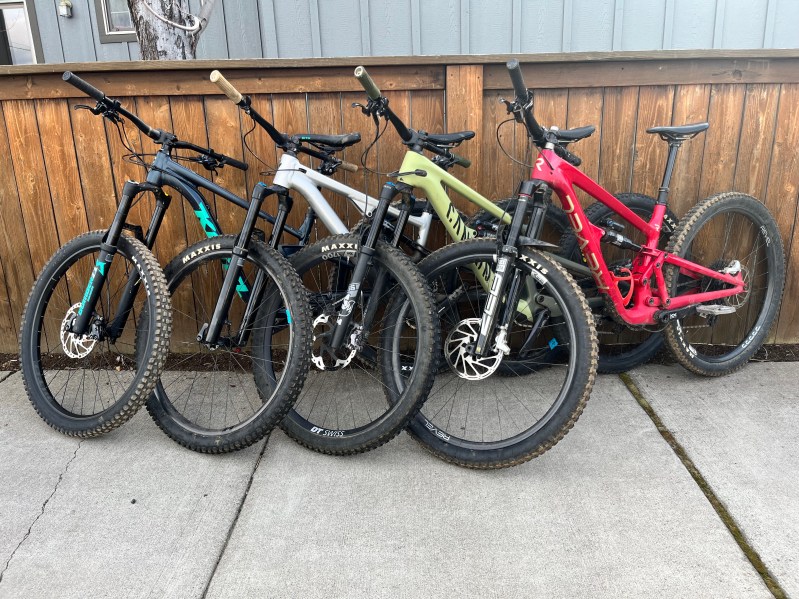
Old habits can certainly die hard, and the mountain bike industry is no expectation. For almost two decades, we have seen significant changes proposed in the mountain bike industry face opposition, only to be accepted as the new standard a handful of years later.
And while this opposition to change in mountain biking does have something to do with new technologies not being better than previous ones, opposition to change itself is a factor.
Switching to disc brakes was thought of as foolish years ago. Wheel sizes have always stirred up controversy, and dropper seat posts were thought of as too heavy. Now, we wouldn’t think of riding a mountain bike without them.
And despite mountain bikes reaching a point of near perfection (we’ve got to admit, they’re pretty damn good), there are still a few standards the industry should adopt to make them even better.

Longer dropper posts on mountain bikes
Dropper post length always corresponds to the size of a mountain bike—the bigger the frame size, the longer the dropper post is. If the dropper post is too short, then it is too difficult to get the saddle out of the way. If it is too long, then the rider can’t reach the pedals.
So, bike companies found a standard of sorts that they have stuck with for quite a while. For example, most medium-sized frames come with a 150mm dropper post. But, as you can see, if you look at different mountain bikes, this is too short, as many won’t have the lower tube of the seatpost inserted fully.
Frame manufacturers had to adapt to dropper seatposts, changing frame designs to accommodate the length of the lower tube of a dropper post. The longer the travel of a dropper post, the longer the lower tube is, as it houses the dropper post. Initially, many mountain bike frames weren’t designed with long seat tubes intended for housing long dropper posts. Shorter dropper posts were used and have stuck.
But, mountain bike manufacturers have responded to their customers wanting a frame with greater insertion depth and have designed them as such. So, although many medium frames could house a 170mm dropper post, they still come with a 150mm. It is time for that to change.

Mountain bike crank arms
Moving from the dropper posts down to the crank arms on a mountain bike, we find the opposite problem. While the dropper posts aren’t long enough, the crank arms are too long.
Longer crank arms provide additional leverage when mountain biking. This makes sense, as a longer lever—which the crank arm acts as—allows for more force being put into the bike. It was thought that shorter cranks would just have your feet spinning in tiny circles.
So, longer crank arms, such as 175mm cranks, were put on mountain bikes. This became a standard during a time when bottom brackets were much higher, so pedal strikes weren’t much of a concern.
Fast forward to today, mountain bike engineers have realized a lower bike is a more stable bike, therefore designing them much lower. Yet, the trend of longer crank arms persisted. A lower bike with long cranks equals a recipe for pedal strikes.
We have found that shortening the crank length by 10mm doesn’t have you spinning tiny circles. There is no reason a medium-sized mountain bike should have 175mm cranks. It’s time for that to change.

Mountain bike brake rotors
Heat from friction is one of the leading causes of brake fade when you are descending steep bits of trail that require a lot of braking. If the rotors are larger, there is more surface area for that heat to dissipate, meaning the brakes perform better. Larger rotors stop mountain bikes better.
So why don’t all bikes have large, 200mm or more rotors? Well, it is partly due to bike standards and partly to do with some bikes not needing them.
Mountain bike frames and forks are designed to fit a specific size rotor. For a long time, the standard was 160mm rotors. The average mountain bike and the average rider weren’t riding on that crazy of terrain that would require much stopping force.
Over the years, the average rider progressed, and mountain bikes began to be designed for tackling the most challenging terrain. So, we saw the standard grow to 180mm, where it has hung around for a long time, even jumping into the 200mm+ range.
Modern, long-travel trail or enduro mountain bikes are designed to ride some gnarly trails. They also need to stop on these gnarly trails. Why design a mountain bike with all of that travel but put tiny rotors on it? It’s time for that to change.



